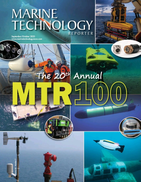
Britlift Spreader Proves Value on Royal Research Ship
A modular spreader beam from Britlift is proving a success on the Royal Research Ship (RRS) Sir David Attenborough, one of the most advanced polar research vessels in the world.Operated by the British Antarctic Survey (BAS), this multidisciplinary research platform operates year-round, spending the northern summer in Arctic. During the southern hemisphere summer it is based in Antarctica where its duties include bringing people, equipment and supplies to BAS research stations. The 129m long vessel has a 50-tonne crane for loading and unloading good and equipment, which can include vehicles and plant
NOC Secures £11M for Early Warning Systems
;are also involved in five further projects, also focusing on the Atlantic Subpolar Gyre. These are POLEMIX, led by the University of Southampton; TIMBER, led by the University of East Anglia; PROMOTE, led by the University of Reading; VERIFY, led by the University of Leeds; and GRAIL, led by the British Antarctic Survey. These projects cover a wide range of innovation and collaboration, from a new proof-of-concept observing system using autonomous profiling floats to predicting tipping points in marine ecosystems and their consequences and opportunities for the UK, especially for the fishing industry

Dancing Krill
carbon deep in oceanic waters as their exoskeletons and poo sink to the seafloor.They are at risk from over-fishing, climate change and ocean acidification, and a new project to monitor their population from space was announced this week by researchers from University of Strathclyde, WWF and the British Antarctic Survey.The ability to do this was recently facilitated by the identification of the signal associated with the pigment that turns the krill red.It’s estimated that there could be up to 500 million tons of krill swimming (and mating) in the Southern Ocean. That’s about the same biomass
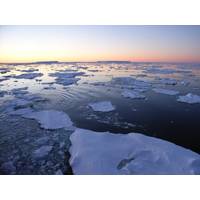
As Antarctic Sea Ice Disappears, Storms Worsen - study
to change their properties particularly density. Professor Josey notes, “The massive increase in ocean heat loss to the atmosphere is increasing the density of water at the sea surface to values not previously seen in the newly ice-free regions.”Co-author Dr. Andrew Meijers, from the British Antarctic Survey, explains further, “The location of this new denser surface water is relatively far from the sites at the Antarctic shelf where the densest and deepest waters of the global ocean are formed.“However, this cooling and subsequent sinking of waters previously covered by sea
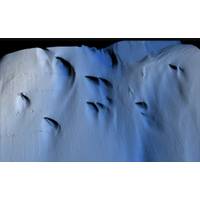
Scientists Discover Mysterious Patterns on Ice Shelf Bottom
, but Ran uncovered a more extensive and complete picture than ever before.”Current models can’t explain the patterns discovered, and scientists now realize there is a wealth of processes left to discover in future research missions under the glaciers.Rob Larter, a marine geophysicist at British Antarctic Survey, and co-author of the paper, said, “The upward-looking sonar data from Ran enabled more extensive, detailed maps of the underside of an ice shelf to be made than have ever been available before. This has provided new insights into the interactions between the ice, fractures within
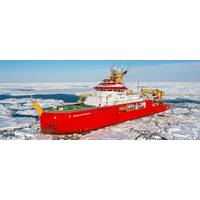
RRS Sir David Attenborough Begins Research Mission in the Southern Ocean
holes in the sea ice to collect samples below it, as well as tagging seals with instruments which will continuously collect data about the ocean as they dive up and down through the water, sending data back to scientists in real-time via satellite communication.Dr Clara Manno, a marine ecologist at British Antarctic Survey (BAS) and part of the PICCOLO project, said, “We’re focusing on the Western Weddell Sea to find out more about some of the key processes that control how much carbon the Southern Ocean is taking up.“Within this vast ocean, the Weddell Sea is considered a ‘trapdoor&rsqu
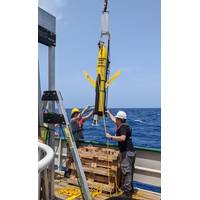
Researchers Study the Fast Gulf Stream Currents
UK-US collaboration that is supported by the Natural Environment Research Council (NERC) and the US National Science Foundation (NSF). Researchers from the National Oceanography Centre, the University of Southampton, the University of Liverpool, the Scottish Association of Marine Science, the British Antarctic Survey and the University of Miami are involved in this project
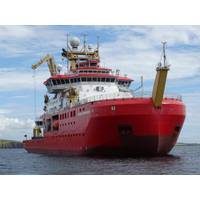
RRS Sir David Attenborough Gearing Up for First Antarctic Science Cruise
laboratory, the Multi-Sensor Core Logger. This plug-and-play lab contains and instrument that can analyze samples on board the ship, informing the next sample site.During these science trials, the ship is also experimenting using hydrotreated vegetable oil (HVO) for the first time, as part of British Antarctic Survey’s (BAS) efforts’ to reduce its carbon emissions.The high-profile vessel, the U.K.’s largest commercial newbuild for over 30 years, was delivered to Natural Environment Research Council and BAS by Cammell Laird Shipbuilders in 2021. BAS undertake vital research in the

$56m Allocated to Refurbish Three British Research Ships
conducted by a surveyor to ensure the vessel is safe to operate for another year. RRS Discovery will then undertake her post refit trial expedition to the North Atlantic over the course of 19 days.The RRS James Cook, also operated by NOC, and the RRS Sir David Attenborough, which is operated by the British Antarctic Survey (BAS)are both scheduled for upcoming refits in Scotland.Image credit Brian Donova

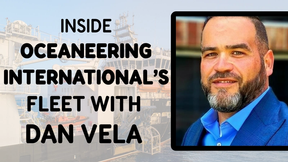
 August 2025
August 2025


